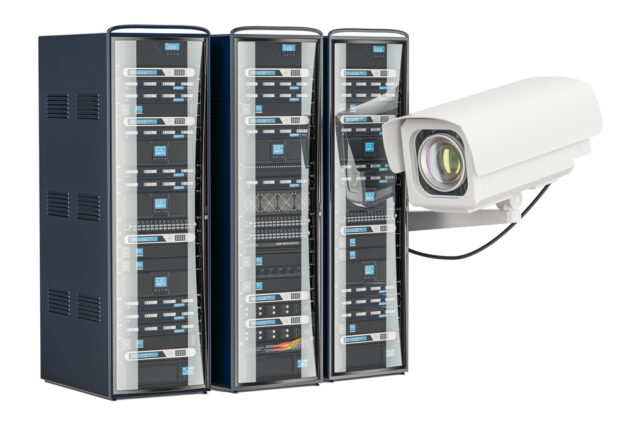
TOP-6 errors when switching from analogue to digital surveillance
TOP-6 errors when switching from analogue to digital surveillance
In favour of digital video surveillance, there are such advantages as cost-effectiveness, the flexibility of settings, a high degree of security and the possibility of remote access. That is why many users are thinking about switching from an analogue video monitoring system to a digital one. Upgrading is often a difficult task, as many errors are made during the system upgrade process. Let’s talk about the most popular ones.
Transition as an evolutionary step
Analog video surveillance, which appeared in the United States in the 70-the 80s of the 20th century, is at the origins of analogue technology. Initially, one task was set for video surveillance to ensure security through visual control and media recording.
Analogue systems, consisting of software and a variety of hardware, have successfully met the challenges. However, with the development of technologies, matrix mechanisms and image quality requirements have expanded, needs for remote access and control have arisen, and the need for local servers has disappeared.
These changes have led to the emergence of a fundamentally new digital video monitoring system capable of ensuring security and solving many marketing problems.
Gradually, digital video surveillance cameras fell in price, and their cost was equal to analogue systems. At the same time, the quality of digital video systems cannot even be compared with outdated models.
Key points in the transition
As a video surveillance specialist with ten years of experience, I will say that the transition from analogue to digital is carried out taking into account the following key points:
- Determination of the purpose of the transition.
- Assessment of the observation’s object scale.
- The conviction that you need cameras with higher resolution and image quality.
- Analysis of the potential load on the existing system, including its capacity.
- Assessment of equipment compatibility.
- Decision on the storage format.
Top 6 mistakes
To avoid technical problems and financial costs when upgrading an analogue video monitoring system to a network IP solution, we will consider the six most common mistakes.
Replacement of all components
Misconception No. 1 in the process of reorganizing the video surveillance system is that it is necessary to replace absolutely all analogue CCTV cameras with digital devices. There may not be such a need because some of the system’s optical elements can be left, while others can be adapted to the new format.
- Use media converters.
They convert standard coaxial cable into an internet connection (maximum speed 100 Mbps) and extend the signal distance up to 1524 m.
Media converters save money and effort by making it easier to replace an old analogue system with a new IP version.
- Use existing analogue video cameras.
Most of the old-style video cameras can be converted for further use with a special encoder to receive and transmit video to the network. Accordingly, the transmission of materials is recorded by the IP registrar. Specialist consultation on the compatibility of the equipment is needed.
Hardware incompatibility
The situation is this: a digital recorder compatible with one analogue camera will support the others, but the case with IP video cameras is entirely different. Each camera needs to be tested for compatibility:
- with the equipment manufacturer;
- with a specific model (for example, the recorder will support the Axis model 207 camera, but it is not compatible with the Axis model 221 camera);
- for a suitable video stream quality.
You also need to pay attention to the combination of systems using a pivot mechanism. You need to make sure that the PTZ equipment will be controllable in the new working environment.
Resolution and image
You need to make sure about the reason you need digital and analogue cameras: is it visual control of large areas or detailing specific processes? In some cases, you can leave some of the analogue cameras; or you can thoroughly mix on equipment with high resolution in others.
It is essential to predict the well-known problem of analogue recorders: the maximum resolution ratio and the number of frames recorded by the video camera per second. The lack of computing power of analogue equipment or technical incompatibility is possible.
At the same time, the use of IP encoders can solve the problem, providing the maximum resolution (640 * 480) and good quality video materials (with a speed of up to 30 images/second).
Bandwidth
Converting a classic video monitoring system to a digital format requires an estimate of the bandwidth:
- if the video signal resolution is kept small and the load does not increase, then the bandwidth will not change;
- if you plan to increase the load on the existing network several times, you need to buy powerful network equipment to receive and process a video stream at high speed (1000 MB / sec or more).
First, you need to do a test for the potential impact of the solution on the throughput.
Loss of functionality
When replacing the matrix switcher with a more powerful model, it is necessary to analyze the safety of the system’s functionality during the daily interaction of personnel (online viewing, playback from the archive).
With proper system design, a new system solution should lead to increased functionality and performance.
Data storage method
Digital video surveillance suggests a need to increase the amount of memory or a new format for data storage.
In the first case, you will need to calculate the amount of memory required based on the maximum resolution to purchase powerful storage. A complete transition to cloud video surveillance is possible (with video storage in the cloud).
Details are in the article “Cloud video surveillance: 5 steps to build a system from scratch.“
CONCLUSION: the aspects mentioned above will help analyze the degree of complexity and depth of upgrading an existing analogue network to an IP system.
Results
In many cases, if you are already a user of an analogue video complex, there is no need to start from scratch. Conduct an equipment assessment to determine which items can be reused. Decide on the goals and scope of the reorganization. Identify points of compatibility and growth. If it is necessary, contact professionals such as Faceter.






